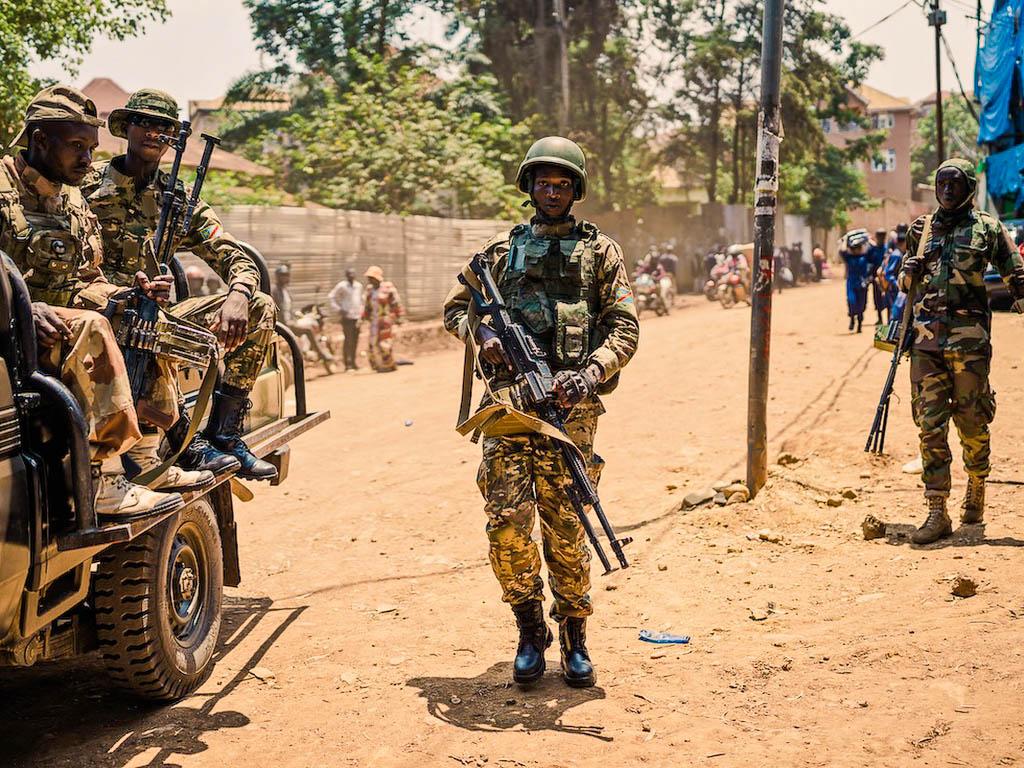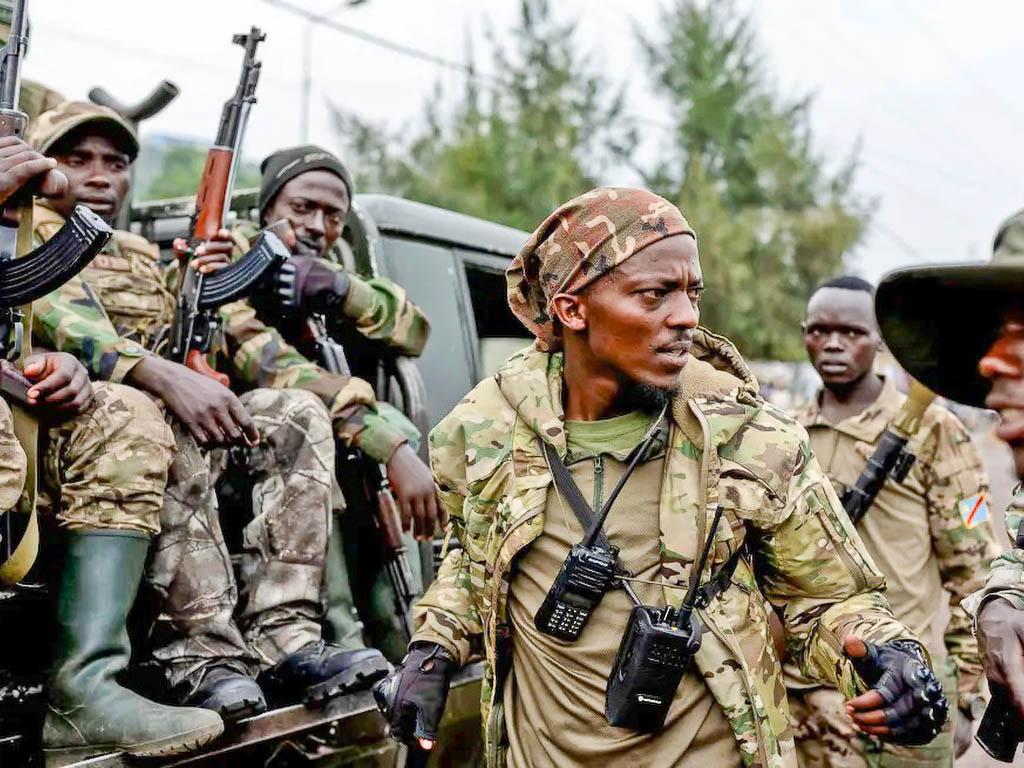All the Ways Rwanda Supports the Congolese Armed Group M23
Mondo 17.03.2025 Antonella Serrecchia Translated by: Jpic-jp.orgThe Rwandan government initially denied involvement, and now remains vague, but the evidence is abundant: for example, Rwandan soldiers are fighting alongside the militia.

In an interview last week, responding to repeated accusations that the Congolese armed group M23 includes thousands of Rwandan soldiers, its political leader Corneille Nangaa stated: “I don’t know, I haven’t seen them. They may have their evidence; I say I don’t have any.” By “they”, he refers to a panel of experts established by the United Nations Security Council in 2004 to monitor, among other things, the activities of the many armed groups operating in the Democratic Republic of the Congo (DRC) and their support networks.
These experts assert that Rwanda has supported M23 since its first offensive against the regular Congolese army in 2012 and that over the past decade it has helped it become the organised and effective militia it is today.
Rwandan President Paul Kagame has always denied these accusations, but recently he has taken a more ambiguous stance, echoing Nangaa in claiming not to know whether soldiers from his army are fighting across the border — a highly unlikely claim, given that he is the commander-in-chief of the armed forces.
According to UN experts, not only is this support true and well-documented, but Rwanda’s Defence Forces provide “systematic support” and are “effectively in control of M23’s operations”. Their reports describe three forms of support: direct presence of Rwandan soldiers in the DRC; training of new recruits; and supply of advanced military equipment.
Rwanda’s military involvement in the DRC is not new — it dates back to the early 1990s. It is historically linked to the reasons behind the brutal genocide of 1994, led by the Hutu government and allied militias, which resulted in the massacre of over 800,000 people in just 100 days, mostly Tutsis but also moderate Hutus who opposed the violence.
The genocide ended when the militia led by Kagame entered the capital Kigali and established a Tutsi-majority government. At that point, many Hutus, including some of the genocide’s perpetrators, fled to the DRC. Some of them regrouped as the Democratic Forces for the Liberation of Rwanda (FDLR), a Hutu militia still active today, which Rwanda claims poses a security threat. Since then, Rwanda has supported various Tutsi militias in the DRC, including M23.
The FDLR is not a genuine military threat to the Rwandan government — at least not from an operational standpoint: “they are too small and too far away,” explains Koen Vlassenroot, Professor of Political Science at Ghent University and researcher at the Egmont Institute. “But ideologically, yes, because they can inspire fear within Rwandan society.” By supporting Tutsi militias in eastern Congo, Rwanda aims to create a buffer zone to protect itself from potential attacks.
There may, however, be other motivations behind Rwanda’s support for M23. One of them is mining: North Kivu and South Kivu — the two regions where M23 has seized vast territories in the past three years — are extremely rich in natural resources sought after on the international market. It is well known that a significant portion of these materials is smuggled into Rwanda, which then exports them globally.
Another reason, highlighted among others by Vlassenroot, may be the increasingly strained relationship between Kagame’s government and that of Félix Tshisekedi, president of the DRC. Recently, Tshisekedi signed military and mining agreements and new infrastructure projects with Uganda, a historical rival of Rwanda. Kagame has also accused him of supporting the FDLR and ignoring the concerns of Congolese Tutsis. Supporting M23 would thus serve as a way to pressure the Congolese government into aligning with Rwanda’s political and economic interests.
According to UN expert reports, between 3,000 and 4,000 soldiers of Rwanda’s national army are currently in the DRC alongside M23. Numerous pieces of evidence back this claim: photographs, satellite imagery, and testimonies from local authorities, humanitarian personnel, former M23 fighters and other armed groups, all reporting sightings of men in Rwandan uniforms at M23 bases and during clashes. UN experts say they have even received confirmations from Rwandan soldiers themselves.
In addition to taking part in military operations, Rwandan officers train militiamen to operate like a regular army. This training occurs in designated camps near the border. One such camp is in Tchanzu, where, between September and October last year alone, 3,000 new recruits completed the five-month training programme. A substantial portion of them are underage: boys over the age of 15 are trained for combat like adult soldiers, while younger ones assist officers in various tasks.
The training includes practical modules, such as weapons handling and combat tactics in rugged terrain, as well as theoretical sessions on so-called rules of engagement — instructions on when and how to use force in various scenarios, similar to the training of regular armies and police forces worldwide.
There is also an element the UN defines as “indoctrination”: courses on M23’s values and political ideals, Congolese history, institutions and identity, the “role of women and youth in the revolution”, and patriotism. Recruits are also taught how to recruit others and gather intelligence useful to the militia.
Ideological indoctrination is especially crucial when recruiting former members of the Congolese army or security forces — a common occurrence, including after M23 took Goma in January this year. Although the Congolese army is poorly equipped and underpaid, it consists of between 100,000 and 200,000 troops — far more than the estimated 3,000 fighters in M23.
The third pillar of Rwanda’s support concerns weaponry. Today, M23 possesses far more advanced arms than it did a decade ago, including some weapons never before seen in Congolese territory — not used by either the national army or other militias.
Evidence shows the use of highly sophisticated, expensive, and difficult-to-transport weaponry, making it “highly unlikely” that M23 could have acquired them without outside help. “It is certainly thanks to the military support they received that they managed to reach Goma,” said Clémentine de Montjoye of Human Rights Watch.
See, Tutti i modi in cui il Ruanda appoggia il gruppo armato congolese M23
Photo. M23 militiamen in Bukavu, 22 February 2025 © Hugh Kinsella Cunningham/Getty Images





















 EDitt | Web Agency
EDitt | Web Agency
Leave a comment